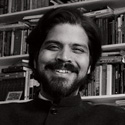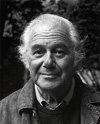
Pankaj Mishra, whose essay “The Disappearance of the Spiritual Thinker” appears in this issue, tells us, “I grew up in India reading Western literature and philosophy, and nothing seemed to me to be more attractive than the life of the intellectual. I have lost that reverence and now wonder how intellectuals could have lent their services to violent ideological ventures. From the time I became interested in Buddhism I have wanted to write about this—not only how knowledge devoid of wisdom comes into being and then becomes institutionalized in government and media policy, but also how I, as a writer, can combine intellectual rigor and academic scholarship with a Buddhistic understanding of the interdependent nature of the globalized world.”

Michael Schumacher’s review of four books published to commemorate the fiftieth anniversary of Allen Ginsberg’s Howl appears here. He says: “While researching Dharma Lion, my biography of Allen Ginsberg, I read through the mountain of Ginsberg’s early journals, letters, essays, and poems, which gave me greater appreciation of the factors leading to the composition of Howl. I was amazed by how events, friendships, writings, studies, and false starts percolated in the poet’s mind and spirit until the exact right moment for writing. Inspiration might be a ‘seizure of illumination,’ as Ginsberg once told me, but as these four books point out, it can take quite a while to reach that point.”

Jacob Needleman’s “Bread and Stone” is excerpted from his new book, Why Can’t We Be Good? “In all my books,” he says, “I have been searching for the bridge between spiritual truth and the aching questions of our everyday lives. And is there any question more painful and central than the devastation of ethics in our culture? What has been utterly lost is the essential mystical root of all moral principles. I was joyfully amazed to find a key to living this connection in day-to-day work with my students in my philosophy class.”

Vicki Mackenzie writes about the phenomenon of Buddhist relics for this issue (“Jeweled Demise“). “‘You check up!’ admonished Lama Thubten Yeshe during my first Buddhist meditation course in Nepal in 1976,” she says. “This seemed an intelligent approach to religion and appealed to my incorrigibly curious nature. Recently, my inquisitive eye was caught by a display of colored round ‘jewels,’ ‘pearls,’ and other strange substances left behind in the cremation ashes of Buddhist masters. They were labeled relics and were said to be signs of enlightenment. What did they mean? I went on another journey of discovery to find out.”

Vishvapani’s essay “The Great Escape” appears in this issue. “My travels among India’s dalits, or ‘outcastes,’ on the fiftieth anniversary of the foundation of the Ambedkarite Buddhist movement, were inspiring and humbling. Spending time with activists and practitioners offered an insight into the prejudice and social problems they face. Yet so many have a deep faith in the dharma and see it as a key to social transformation. The twenty million dalit Buddhists deserve to be much better known in the West. Their combination of faith and social action has much to teach us.”